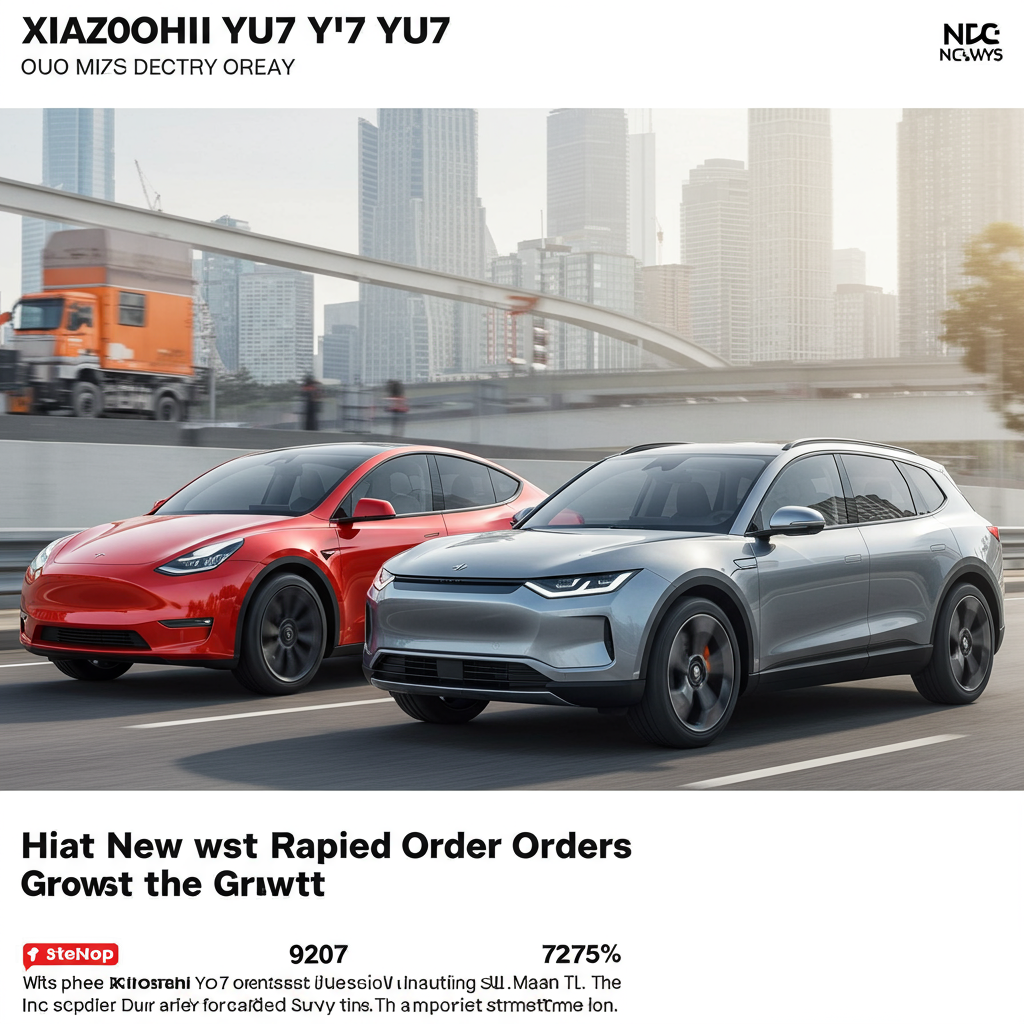US stock markets are experiencing a significant upward trend, fueled by investor optimism as a critical July 9th deadline approaches for the potential reintroduction of previously postponed trade tariffs. Major indexes saw notable gains over the past week, reflecting hopes that President Donald Trump’s administration will successfully negotiate trade deals with key partners, thereby preventing new import duties from taking effect. This rally underscores the market’s sensitivity to trade policy and its desire to avoid conflicts that could negatively impact economic growth and potentially lead to inflation.
The recent market performance shows the Dow Jones Industrial Average climbing 3% over five days to reach 44,094.77. Meanwhile, the tech-heavy Nasdaq Composite advanced 2.83% to 20,369.73, and the broad S&P 500 index rose 2.37% to 6,204.95. These movements pushed the S&P 500 and Nasdaq to fresh record highs on Monday, indicating robust investor sentiment despite looming trade uncertainties. While stock futures showed a slight dip early Tuesday, the positive momentum from Monday’s trading session remained a dominant theme on Wall Street.
Tariff Tensions and Trade Deal Push
A primary driver behind the market’s current optimism is the impending July 9th deadline. Many tariffs announced by the Trump administration had been temporarily suspended, but they are now scheduled to potentially snap back into effect. Treasury Secretary Scott Bessent previously hinted that approximately 100 trading partners could face a minimum 10% “reciprocal” tariff if agreements aren’t reached by this date, although a later update signaled a potential shift towards unilateral letters specifying rates effective August 1st, potentially moving away from sole reliance on the July 9th deadline for negotiated outcomes. Investors are closely watching ongoing negotiations, betting that last-minute deals could avert the broader application of these taxes on imported goods. Avoiding a widespread trade war is seen as crucial for maintaining economic stability and preventing potential price increases for consumers and businesses.
Key Negotiation Fronts
The path to preventing new tariffs is paved with complex bilateral negotiations, each presenting unique challenges and opportunities. Several nations are actively engaged in talks to secure favorable terms or exemptions before the deadline.
Canada, for instance, provided a notable boost to sentiment by deciding to withdraw a planned digital services tax targeting US technology firms. This move paved the way for the resumption of trade talks between Washington and Ottawa, aiming for a deal by mid-July. President Trump had previously suspended these discussions in retaliation for the proposed tax, calling it a “direct and blatant attack.” The resolution with Canada is viewed as a positive signal, suggesting other nations might also find ways to reach agreements.
Discussions with the European Union are also ongoing. The EU bloc has indicated a willingness to accept a baseline 10% tariff on many of its exports to the US. However, it is actively seeking specific exemptions for key sectors like pharmaceuticals, alcohol, semiconductors, and commercial aircraft. President Trump had previously threatened tariffs as high as 50% on European goods, making the negotiation for a lower rate and carve-outs critical for European industries. Reports suggest the influence of large European companies may be impacting the EU’s negotiating stance.
Trade dynamics with China are complex, showing both easing tensions and ongoing strategic competition. The US recently lifted export restrictions on chip design software and ethane, fulfilling aspects of a May framework agreement aimed at broader trade normalization. China, in turn, has made concessions on rare earth export controls. Despite these steps, Beijing remains wary of US efforts to forge deals with other countries, interpreting them as attempts to isolate China and disrupt supply chains. They specifically criticized the US-Vietnam deal as targeting transshipping practices used by Chinese firms.
Vietnam and Japan Deals
A significant development was President Trump’s announcement of a trade deal with Vietnam. This agreement reportedly sets specific tariff rates for Vietnamese imports: 20% for standard goods and 40% for items deemed “transshipping” (originating elsewhere but routed through Vietnam). Trump stated Vietnam would grant US goods zero import duty and total market access. However, Vietnamese negotiators have reportedly indicated that details are still being finalized, and businesses await full clarity. This deal is partly seen as a strategy to counter China’s trade practices, particularly “origin washing,” and signal the permanence of higher tariffs to other Asian nations. Vietnam has become an increasingly vital trading partner as companies diversify manufacturing away from China.
In contrast, negotiations with Japan have reportedly “soured,” according to President Trump. He has threatened significantly higher tariffs, suggesting rates like 30% or 35%, surpassing the 24% rate previously mentioned for “Liberation Day.” Trump described Japanese negotiators as “very tough” and “very spoiled,” highlighting potential friction in reaching an agreement. Japan is simultaneously seeking lower tariffs on automotive and steel products imposed earlier by the US.
India Negotiations: A Complex Path
Negotiations with India have been particularly intensive, with officials pushing hard to finalize a deal before the July 9th deadline. India recorded a substantial $45.7 billion trade surplus with the US last year, making it a key focus for the US administration’s push for “reciprocal” trade. India’s labor-intensive export sectors, including electronics, gems and jewellery, and shrimp, are particularly vulnerable to potential tariffs.
Despite cautious optimism among Indian exporters, the path to an agreement faces significant hurdles. A major sticking point remains US agricultural and dairy products. Indian commerce ministry sources have stated that lowering tariffs on genetically modified corn, soybeans, rice, and wheat is “unacceptable,” reflecting Prime Minister Narendra Modi’s government’s commitment to protecting the interests of Indian farmers. India’s Finance Minister drew “very big red lines” concerning agriculture and dairy sectors, indicating these areas are non-negotiable for significant concessions.
India is reportedly open to reducing tariffs on other US products, such as walnuts, cranberries, certain fruits, medical devices, automobiles, and energy goods. India also seeks relief from existing sectoral tariffs on steel and aluminum and greater access for its textiles and footwear exports. Experts suggest a limited trade pact is the most probable outcome before the deadline, where India might cut tariffs on some industrial goods and offer restricted access for certain US farm products in exchange for the US dropping the proposed 26% levies (in addition to the standing 10%). However, talks could collapse if the US insists on opening India’s core agricultural sectors or allowing GMO products. For Indian exporters, particularly in seafood, absorbing the current 10% tariff is manageable, but a jump to 25-30% would likely force American buyers to seek cheaper alternative sources.
Beyond Tariffs: Other Market Influences
While trade policy is currently a major focus, other factors also contributed to the positive market sentiment. Individual stock performance played a role, with Oracle seeing a 4% rise on Monday, significantly boosting the S&P 500. The tech giant’s CEO reported a strong start to its fiscal year, citing new large cloud service agreements. GMS, a supplier of specialty building products, saw its stock jump 11.7% following its agreement to be acquired by a Home Depot subsidiary. Hewlett Packard Enterprise rallied 11.1%, and Juniper Networks climbed 8.4% after reaching an agreement with the US Department of Justice that could facilitate their merger, pending court approval.
The banking sector also showed strength after the Federal Reserve announced on Friday that all major banks proved financially robust enough to withstand an economic downturn based on stress tests. This news provided reassurance about the stability of the financial system, with JPMorgan Chase climbing 1% and Citigroup gaining 0.9%.
Tax Cut Optimism Adds Fuel
Adding another layer of optimism to Wall Street is the expectation surrounding the extension of key tax cuts implemented during President Trump’s first term. News that the Senate passed a procedural vote for a bill referred to as the “‘One Big, Beautiful Bill'” fueled hopes for this extension. This proposed legislation is estimated to cost around $4.5 trillion and includes provisions for increasing border security and introducing new restrictions on public health insurance programs. President Trump is reportedly pushing for the bill to reach his desk by the July 4th holiday. While the potential extension of tax cuts is viewed positively by markets as a form of economic stimulus, the non-partisan Congressional Budget Office (CBO) has estimated it could add nearly $3.3 trillion to US deficits over the next decade, raising fiscal sustainability concerns.
Economic Outlook and Upcoming Data
The broader economic backdrop remains critical for investor sentiment. Fears of widespread trade wars that could stifle economic activity and push inflation higher are a major concern being mitigated by the hope for trade deals. Simultaneously, the debate over tax cut extensions highlights the tension between stimulating the economy through fiscal policy and managing the national debt.
In the bond market, Treasury yields saw declines ahead of several major economic reports scheduled later in the week. The most anticipated of these is the US jobs report, typically released on the first Friday of the month but moved up to Thursday this week due to the upcoming Fourth of July holiday. This report is widely viewed as a potential “make-or-break moment” for expectations regarding potential interest rate cuts by the Federal Reserve. Currently, market sentiment leans against a July rate cut, with analysts anticipating two or three cuts later in the year. The outlook for monetary policy could also be influenced by President Trump’s suggestion that he might name a successor to Federal Reserve Chair Jerome Powell within months.
International markets presented a mixed picture on Tuesday morning. Germany’s DAX was largely flat at 23,908.82, while France’s CAC 40 dipped 0.16% to 7,653.59. The UK’s FTSE 100 saw a gain of 0.22% to 8,780.60, and Italy’s FTSE MIB dropped 0.48% to 39,601.38. Across Asia, Japan’s Nikkei 225 fell 1.05% to 40,062.35, South Korea’s Kospi rose 1.05% to 3,104.19, and the Shanghai Composite index edged up 0.32% to 3,455.37. Hong Kong’s market was closed, while Australia’s S&P/ASX 200 saw a slight gain of 0.1% to 8,550.70.
In commodity markets, Brent crude oil prices slipped 0.42% to $66.46 per barrel, and WTI crude dropped 0.4% to $64.85 per barrel early Tuesday. Currency markets saw the US dollar fall slightly against the Japanese yen, while remaining roughly flat against the euro.
Frequently Asked Questions
What is the significance of the July 9th tariff deadline for US markets?
The July 9th deadline is significant because it is the date when many previously postponed trade tariffs announced by the Trump administration are scheduled to potentially come back into effect. Investors are watching this date closely, as the imposition of new tariffs could disrupt trade, potentially slow economic growth, and increase inflation. Market optimism stems from the hope that the US can negotiate deals with trading partners before this deadline, averting a widespread reintroduction of these tariffs.
Which specific countries are involved in these trade negotiations with the US?
Several key trading partners are actively negotiating with the United States to avoid new tariffs. These include Canada, the European Union (EU), China, Vietnam, Japan, and India. Each negotiation involves unique points of discussion, such as specific products or sectors targeted for tariffs, proposed duty rates (like the 10% baseline considered by the EU or the 20%/40% for Vietnam), and specific demands from each side (e.g., India’s stance on agricultural imports or the EU seeking exemptions).
How could the potential tariffs or trade deals impact the US economy and investors?
The potential impact is twofold. If new tariffs are widely imposed, it could lead to trade wars, disrupting supply chains, increasing costs for businesses and consumers, and potentially slowing overall economic growth and driving inflation higher. This uncertainty could lead to market volatility. Conversely, successful trade deals that avert tariffs are seen as positive for the economy, fostering stability and boosting investor confidence, which can support stock market rallies as seen recently. Beyond tariffs, investor sentiment is also influenced by hopes for extensions of tax cuts, which could provide economic stimulus but also raise concerns about the national debt.
Overall, the US stock market’s recent gains are heavily intertwined with the high-stakes trade negotiations unfolding ahead of the July 9th deadline. While optimism about potential deals and tax cut extensions is currently driving positive sentiment, the actual outcomes of these talks and the impact of upcoming economic data, particularly the jobs report, will be crucial in determining the market’s direction in the coming weeks. Investors remain cautiously optimistic, hoping for resolutions that favor economic stability and continued growth.



